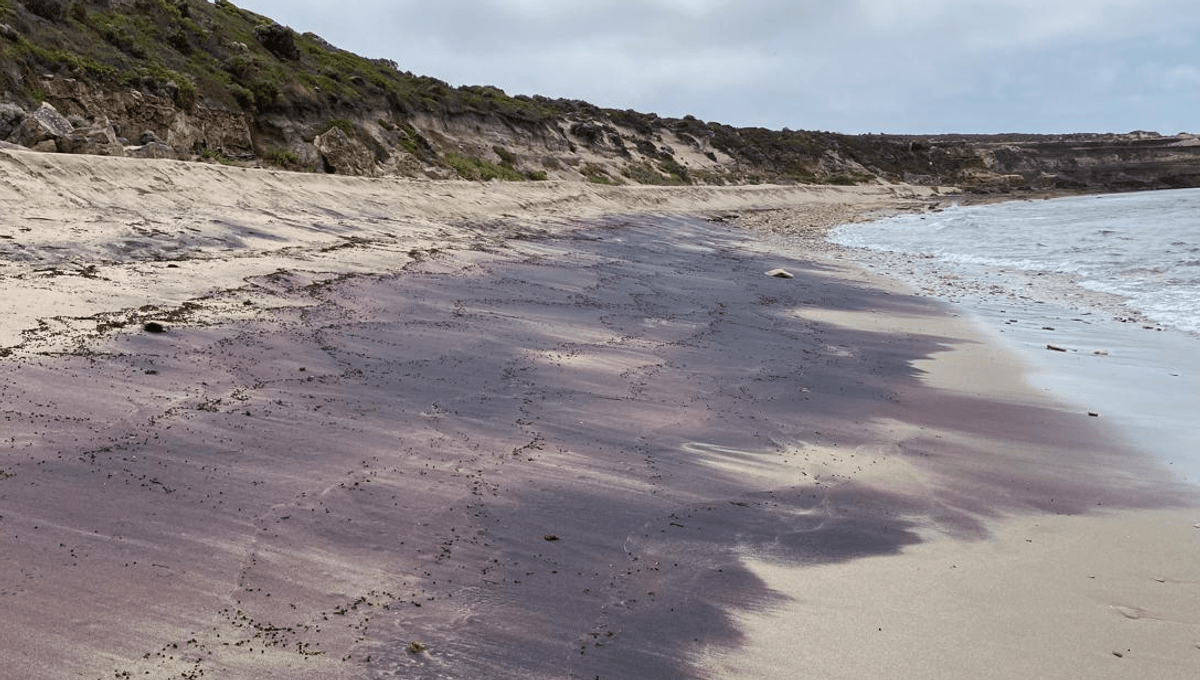
South Australia’s Yorke and Fleurieu Peninsulas host some unusually colored beaches. The pink color was already known to be pulverized garnet, but an attempt to find the source has revealed a very unlikely location buried in ice and thousands of kilometers away.
South Australia is known for pink things, including its famous lakes and the shorts of its former premier. Somewhat less well known are the pink sands on the peninsulas either side of the Gulf of St Vincent. On some beaches these pink grains are rare enough to be barely noticeable, but others are predominantly pink.
Identifying the sand as being from garnet smashed against other rocks is relatively easy, but finding the source is harder. The conditions to produce garnet have not occurred often in Earth’s history. Scientists decided if they could work out where the garnet came from, unraveling the path by which it reached these beaches could teach us a lot about the geologic history of the area.
South Australia had two known sources of garnet. One occurred 514-490 million years ago when the Adelaide Fold Belt was formed nearby. The other was much earlier when the Gawler Craton, which now makes up the middle of the state, was built between 3.3 and 1.4 billion years ago.
The University of Adelaide has pioneered a method for using lasers to perform lutetium-hafnium dating. Using this they were able to show that some garnet grains on the state’s beaches come from each of these events. However, the most abundant garnet grains have an age of 570-590 million years.
“The garnet is too young to have come from the Gawler Craton and too old to have come from the eroding Adelaide Fold Belt,” said University of Adelaide PhD student Sharmaine Verhaert in a statement. “Garnet requires high temperatures to form and is usually associated with the formation of large mountain belts, and this was a time when the South Australian crust was comparatively cool and non-mountainous.”
Verhaert and Dr Stijn Glorie needed to look further afield, but knew prolonged time in marine environments destroys garnet so it probably wouldn’t be too far.
They realised that the Cape Jervis Formation, which overlaps with the Fleurieu Peninsula, contains garnet mixed rock and other sands. When the rocks of the Formation erode, the garnet escapes and can end up on nearby beaches. Moreover, testing revealed this garnet as 590 million years old, close enough to what they were looking for.
This, however, only pushes the question one step further up the chain. If South Australia was too inactive at the time to produce its own garnet, how did it get into the Cape Jervis Formation, from which it has since eroded?
The answer, Verhaert, Glorie and co-authors conclude, is that it came from Antarctica when it was joined to Australia as part of Gondwana. For obvious reasons we don’t know a lot about Antarctica’s rocks, but garnet of the right age has been found in an outcrop of the Transantarctic Mountains that divide East and West Antarctica. It’s likely there is a lot more buried under the ice where we can’t reach it.
“It is conceivable that millions of years of ice transport eroded the bedrock underneath and transported this cargo of garnet north-westwards, towards the conjugate Antarctic-Australian margin,” said Glorie.
The authors think the garnet was formed during a period of crustal thickening in east Antarctica that represented the first stage of a major mountain-building event.
The garnet was arriving in South Australia around the same time its hills were recording the impressions of some of the earliest complex life forms, whose epoch is named after a location there.
From there, the garnet deposits would have been stored in glacial sediments for hundreds of millions of years until erosion allowed them to escape, to be washed up on nearby beaches.
“We have effectively uncovered a major mountain building event that redefines the timing of the onset of convergence in the Pacific Ocean,” Glorie said.
The study is published open access in Communications Earth and Environment.
Source Link: South Australia’s Pink Garnet Beaches Are Probably Courtesy Of An Antarctic Mountain